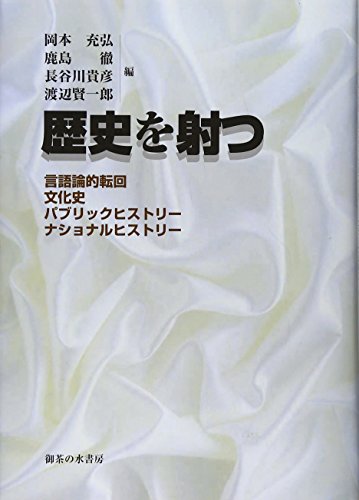4 0 0 0 IR ベンヤミン「歴史の概念について」再読 -新全集版に基づいて (一) -
- 著者
- 鹿島 徹
- 出版者
- 早稲田大学大学院文学研究科
- 雑誌
- 早稲田大学大学院文学研究科紀要. 第1分冊, 哲学 東洋哲学 心理学 社会学 教育学 (ISSN:13417517)
- 巻号頁・発行日
- no.58, pp.三-二〇, 2013-02-26
- 著者
- 鹿島 徹
- 出版者
- 物語研究会
- 雑誌
- 物語研究 (ISSN:13481622)
- 巻号頁・発行日
- no.13, pp.24-38, 2013-03-31
As a response to the prospectus (shui-bun) of the symposium of Monogatari Kenkyukai in Summer 2012, and with regard to the recent discussion concerning methodology of historiography in Japan, this essay both tries to make the significance of procedure of historical verification clear and criticizes the positivist self-understanding of many historians. It takes up HAGITANI Boku's study of Tosa nikki as an example to show how highly specialized research of traditional Japanese literature has the potential of contributing to the discovery of traces of unrecorded existence of "forgotten ones," and makes us aware of a similar kind of people in the present society, referring to the historical theory of Walter Benjamin's "On the Concept of History." In the aforementioned situation, it isn't a narrative/story, but a Gild (image) that functions as a medium for finding out and expressing the hidden existence of these people. Furthermore, this essay considers what "stories woven in a dynamic interchange of fiction and fact" could mean in the context of the symposium prospectus. The clue is Benjamin's "The Storyteller", which analyses the flexibility and mutability of a story as a tool of communicating one's experience to others. Such a story is able to liberate us from a solid narrative framework of historiography and the novel as a modern genre of literature. With the help of Paul Ricoeur's concept "refiguration," this essay points out that every historical, fictive, and factual/fictive story might change the way of life of the storyteller as well as the listener and reader.
3 0 0 0 OA 歴史認識と歴史叙述のあいだ
3 0 0 0 OA 時代診断としての「現在主義」 -フランソワ・アルトーグ『「歴史」の体制』をめぐって-
- 著者
- 鹿島 徹
- 出版者
- 早稲田大学大学院文学研究科
- 雑誌
- 早稲田大学大学院文学研究科紀要. 第1分冊, 哲学 東洋哲学 心理学 社会学 教育学 (ISSN:13417517)
- 巻号頁・発行日
- vol.56, pp.三-一八, 2011-02-26
2 0 0 0 OA ベンヤミン「歴史の概念について」再読 -新全集版に基づいて (一) -
- 著者
- 鹿島 徹
- 出版者
- 早稲田大学大学院文学研究科
- 雑誌
- 早稲田大学大学院文学研究科紀要. 第1分冊, 哲学 東洋哲学 心理学 社会学 教育学 (ISSN:13417517)
- 巻号頁・発行日
- vol.58, pp.三-二〇, 2013-02-26
- 著者
- 岡本充弘 鹿島徹 長谷川貴彦 渡辺賢一郎編
- 出版者
- 御茶の水書房
- 巻号頁・発行日
- 2015

